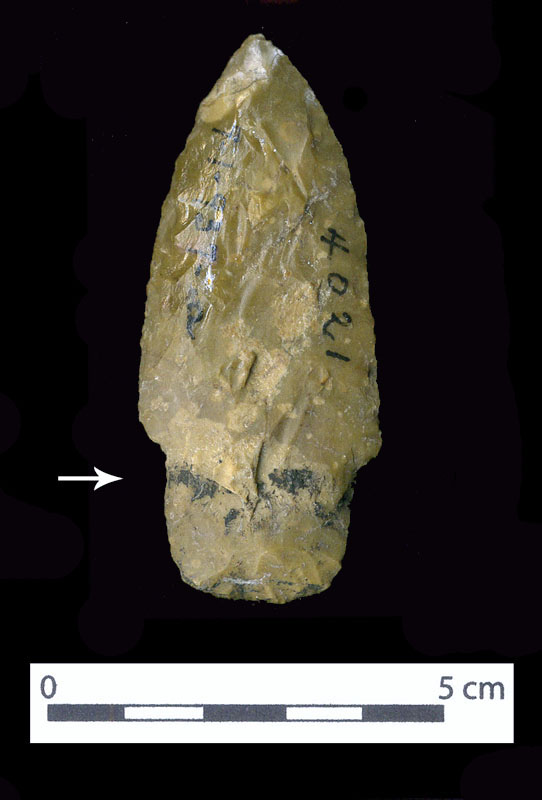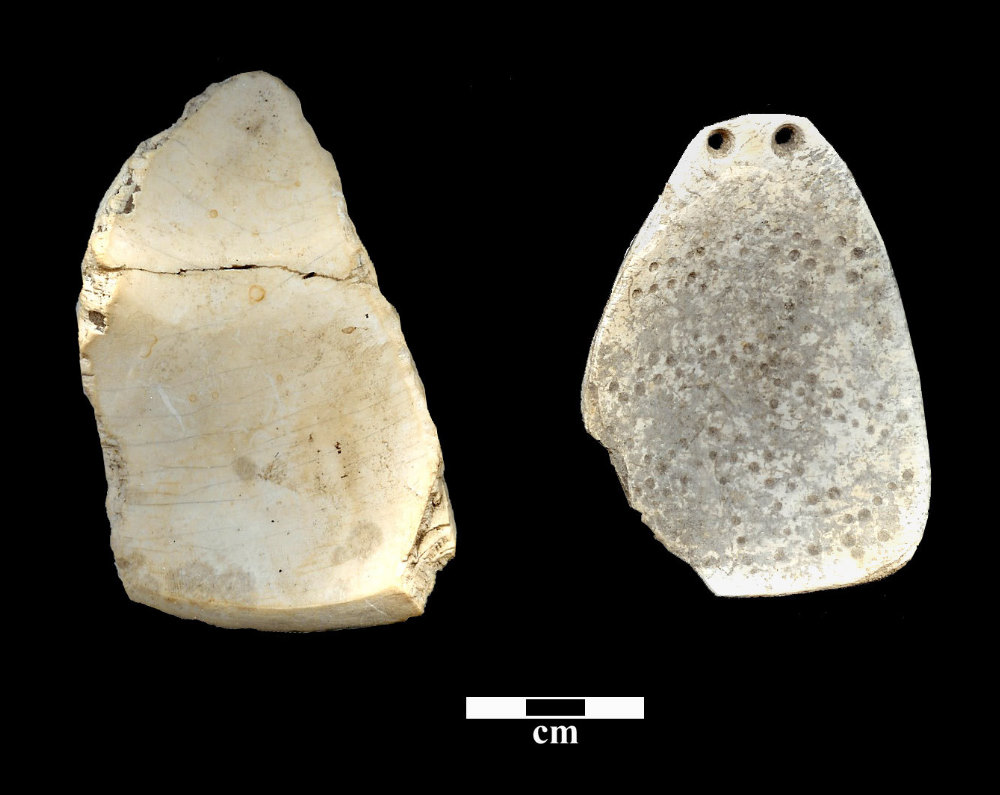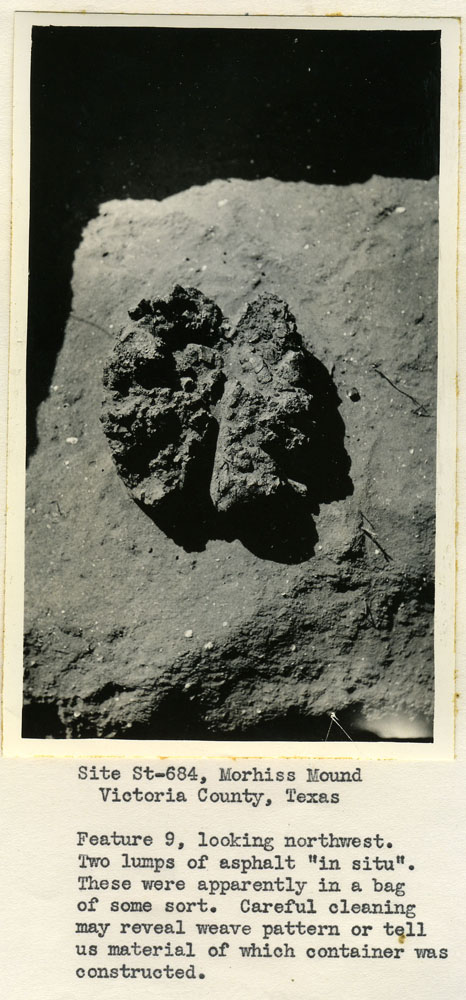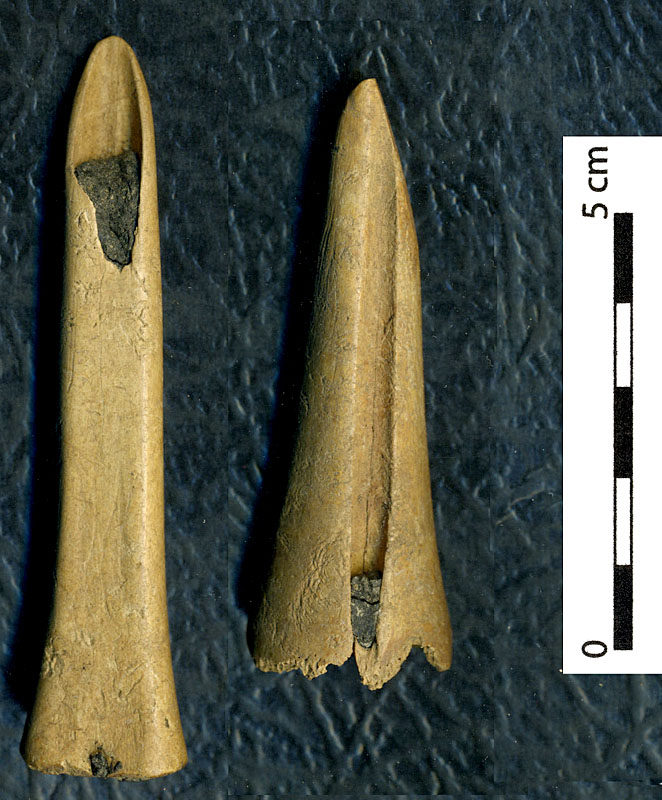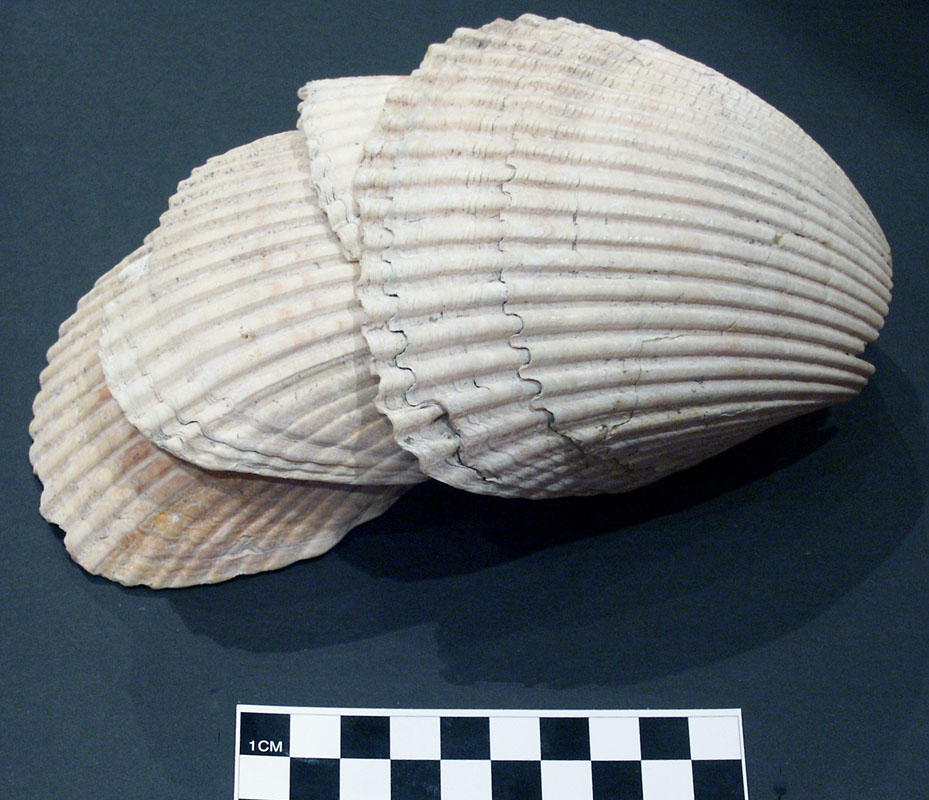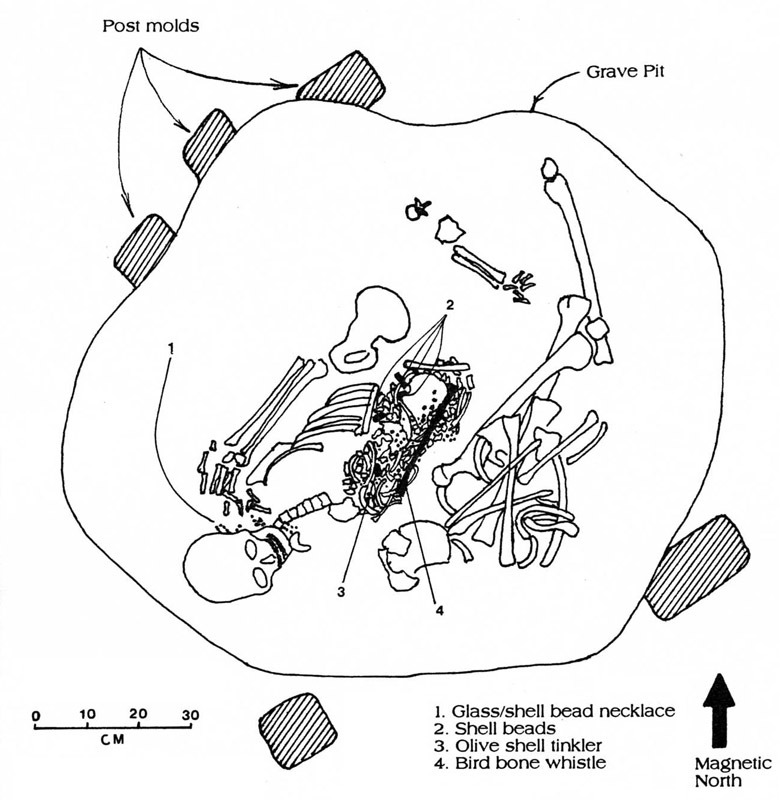Littoral Resource Exploitation: Evidence for Beachcombing in Texas
Beachcombing along the Texas coast has a much longer history than most of us might realize. Archeological investigations along the Texas coast and inland have documented many objects that clearly demonstrate that aboriginal peoples often made use of flotsam and jetsam that washed ashore including shells, asphaltum, wood and other natural materials. The exploitation of littoral resources, specifically beachcombing, made available raw materials to Native peoples that were otherwise inaccessible. Archeological evidence of use of littoral resources dates back at least as early as 6,000 years ago. But it was not until the Late Archaic period some 3,000 years ago, around the time that the modern sea level was established, that aboriginal beachcoming seems to have intensified. Modified natural artifacts, and in the historic period, European manufactured goods, illustrate the success of the beachcombing strategy.
Texas’ long coastline and barrier islands offer a large expanse for potential beachcombing. If one combines the coast of the mainland and the barrier islands, 624 miles of total beach is exploitable according to Jean Andrews in her classic book Sea Shells of the Texas Coast. Most of the useful things found along Texas’ beaches come and go as the result of four natural forces: tides, ocean currents, wind, and river discharge. Rivers and streams move sediment and floating debris (flotsam) such as wood from the inland to the coast, especially during major flood events. The river-borne materials are discharged into the bays and ultimately the Gulf where they are reworked and moved along the coast by long-shore currents and tides. Periodic storm surges, especially those associated with hurricanes, have the power to reshape the coast and move objects of almost any size, leaving many stranded on or above the beach line. Chief among them are the shells of once-living marine organisms.
Beachcombing is an activity that many modern beachgoers take part in, and a valuable source of information about the possibility of ancient beachcombing. Shells are the primary quarry of modern beachcombers, though a myriad of modern debris is also collected as well as other natural objects as well catalogued and described by Andrews. The items found today give us a good indication of the kinds of things which would have been available to Native Americans exploiting the littoral zone. Keep in mind, however, that the quantities of natural objects found today are undoubtedly much smaller than those that would have been found in prehistoric times. This is because so many of the rivers emptying into the Gulf of Mexico have been damned, permanently trapping sediment as well as flotsam, and greatly reducing the flow of water. And today nature’s products often pale in number by comparison to modern manufactured trash.
Second only to shells, the black, tar-like substance known as asphaltum is one of the best lines of evidence for littoral resource exploitation in the past. Asphaltum is a bituminous residue of petroleum that derives from natural offshore seeps and, being lighter than water, floats and is eventually deposited along Gulf beaches. Float card and bottle experiments show the most likely source for the petroleum products found on the beaches of Texas are natural seeps found in the Northern Gulf. Beachgoers today find the gummy substance quite annoying, but prehistoric peoples found the substance very useful.
The use of asphaltum by aboriginal peoples is well documented in early historic accounts and abundant archeological evidence extends its use well back into the prehistoric era. The three principal uses of asphaltum were as an adhesive, a waterproofing coating, and a decorative paint. These are detailed in the Nature’s Harvest Raw Materials Gallery. Here we’ll mention only a few examples.
The most extensive use of asphaltum is represented by the Rockport Black-on-Grey pottery made by the Karankawa Indians of the central Texas coast and their ancestors beginning by A.D. 1250. The Karankawa and their prehistoric ancestors applied asphaltum as a molten, decorative paint on already-fired gray sandy paste pottery. The designs elements were primarily geometric and wavy lines, dots, and triangles. Although few restorable vessels have been recovered, reconstructed designs from the large sample of Rockport pottery recovered from the Guadalupe Bay site showed that there were many different variations on the asphaltum-painted theme (see Guadalupe Bay, Rockport Pottery.)
Rockport potters also used asphaltum in two other ways. Cracked vessels were mended by applying asphaltum to the cracks. In some cases, presumably for vessels meant to hold liquids, the vessel interiors were coated with a thin layer of asphalutm. This use of asphaltum on ceramic vessels distinguishes the central coast of Texas from the upper coast areas where asphaltum was not used for ceramic decoration and only rarely for coating or mending.
The other common use of asphaltum along the coast, and inland as well, as a binding agent to haft projectile points and other stone and bone tools, began thousands of years earlier. The practice of using asphaltum as a hafting glue became common in Late Archaic times after around 1000 B.C. at about the same time that the modern sea level was reached and the modern barrier islands and bay sytems were well developed. Numerous examples of dart points with asphaltum traces dating to the Late Archaic period were recovered from the Morhiss Mound site on the lower Guadalupe River near Victoria. A mass of asphaltum weighing over two pounds found at Morhiss Mound shows that substantial quantities of this material were sometimes carried inland. The shape of the lumps suggests that the asphaltum had been transported from the coast in some sort of fiber bag or perhaps a basket.
A great many stone, bone, and shell artifacts bearing traces of asphaltum residue have been found at sites along the Texas coast, especially in the upper and central coastal areas. In most cases, the asphaltum was used as an adhesive to help bind tools to handles that would have been made of wood or cane. Clearly, asphaltum was a sought-after resource, one that coastal groups must have regularly sought along the beaches and one that made its way inland through trade and exchange.
Certain of the shell species found at coastal and inland sites also point to littoral resource exploitation. For example, the lettered olive (Oliva sayana) prefers deep offshore waters, while its smaller cousin the minute dwarf olive (Olivella minuta) prefers the surf zone (both also occur in tidal inlets).The lightning whelk (Busycon perversum pulley) can be found in offshore waters, tidal passes, and in firm-bottomed bay areas with relatively high salinity. Modern beachcombers commonly find all these shells along the shoreline following storms.
Artifacts made from Busycon occur at archeological sites all along the Texas coast as well as at sites up to several hundred miles inland, mainly as finished grave goods such as beads and pendants. Tools including adzes, hammers, and projectile or perhaps harpoon points were also manufactured from whelk shell; these are fairly common along the central and lower coast, but rarely found inland with the notable exception of Morhiss Mound. At Morhiss Mound and Loma Sandia, whole or substantially whole whelk shells have been documented as well as shellworking debris. Most evidence of shellworking is found at coastal sites, especially those in the Rio Grande delta at the southern tip of Texas. It can be inferred that most shell products were traded or brought inland in finished form. See Nature’s Harvest entries on Shell Tools and Shell Ornaments for details and examples.
The giant Atlantic cockle (Dinocardium robustum) is another species likely obtained from littoral zones found at coastal and some inland sites. The largest cockle found off the coast of Texas, this bivalve is found offshore in deeper waters with high salinity and ranges in size from 76-101 mm. Modern beachcombers find large numbers of this species washed ashore after storms, many of them still alive. Therefore, this species would have represented both a material resource and, perhaps, a supplementary food resource. Interestingly, in at least three archeological sties, giant Atlantic cockle shells have been found intact with minimal modification. But rather than representing discarded food debris, they occur as grave goods at several sites, and as caches of stacked shells found at sites along the lower Guadalupe River.
The Florida horse conch (Pleuroploca gigantea) represents the largest shell found on the Texas shores. Typically found in offshore waters generally in open ocean areas with a hard substrate, this species shell ranges 150mm to 225mm in size. This shell is uncommonly found by modern beachcombers. The Morhiss Mound site has a few examples of this species modified as a cutting tools. The small number of these shells is probably due to their scarcity on Texas shorelines.
The ponderosa ark (Noetia ponderosa) is another species found at Morhiss Mound that is likely the result of littoral zone exploitation. Also typically found offshore, this species of bivalve is remarkable for its thick shell and strong ligament attachments resulting in it often being found as a paired shell. This shell is a common find among modern beachcombers. At Morhiss Mound the only modified shells of this species were made into pendants, although unmodified shells were also present that may represent unused tool-making material.
Yet another beachcombed candidate at Morhiss Mound is an ear spool manufactured from a shark vertebra. This unique object has had the hole for the spinal column drilled from both sides to enlarge it and the edges show evidence of use wear typical of ear spools. This artifact is of an unknown species making it difficult to determine if this animal was recovered from the littoral zone or if this animal was taken from coastal waters. A similar situation is found when sharks teeth are recovered, such as those found at Mitchell Ridge, which were recovered from feature 87, an 18th century grave. Unfortunately, these teeth were not identified by species, like the ear spool from Morhiss Mound. Without species information, the habits and range of the animals responsible for the artifacts can not be determined, though recovery from a littoral zone by Natives is a likely explanation for the presence of such artifacts.
A final example of a material obtained from prehistoric beachcombing is pumice, a porous volcanic rock that is so riddled with air pockets that it floats. Pumice can be found along the beaches and shorelines of the Texas coast; modern beachcombers find it fairly regularly. Texas specimens probably come from the nearest known source, the Tuxlas Mountains near the coast in southern Mexico below Veracruz. Cloud blower style stone pipes made of pumice have been found along the lower Texas coast, Pumice may be light enough to float, but it is also very abrasive and was extensively used by native peoples along the coast as abraders, probably mainly to shape shell and bone.
Recognizable fragments of pumice abraders are regularly found at coastal sites, but whole artifacts are almost unknown. Unlike those made of sandstone, which was the most common material abrading tools were made of, pumice abraiders wouldn’t have lasted long. Thus, the use of pumice is almost certainly underappreciated. For example, at the Guadalupe Bay site at the head of San Antonio Bay, thousands of tiny fragments of pumice were found, yet only a few were large enough to be recognizable as fragments of abraders. The many fragments of pumice and likely littoral shell species (such as lightening whelk) found at this site suggest that native peoples regularly ventured forth in canoes to Matagorda Island beachcombing forays.
Early historic documents describe many examples of beachcombing activities by native peoples and the resulting goods. Cabeza de Vaca reports that one of the trade items exchanged among the Natives which he lived among was “a certain fruit that looks like a bean” for medicinal purposes and in dances. This fruit very well may have been one of the various hard seeds often found along the sea shores of Texas. The most likely candidate is the sea heart (Entada gigas) large vine that grows in the Caribbean and in the tropical forests of Central America and produces a heart-shaped seed (“bean”). This bean is commonly found by modern beachcombers. According to Andrews, it is also often found in modern Indian markets in Mexico, and touted for its medicinal properties. This matching the use to which Cabaza de Vaca claimed these beans were put in the Native medicinal and ritual culture.
The presence of European goods among the native inhabitants of Texas in early explorers accounts or in archeological context also point to beachcombing. Martin Salinas has described encounters of early Spanish explorers in the lower Rio Grande area with the Tanaquiapemes Indians. Upon initiation of trade relations, the Indians reportedly brought many natural times, but also glass bottles which appear to have been wine bottles of European origin. These bottles were likely the result of shipwrecks and either collected directly from the derelict vessels or gathered on the beaches of the Gulf coast. Anlso de León expedition in 1686 reportedly found a ranchería (village) with several items of European manufacture including a barrel stave, ship’s bolt, and glass. These items most likely resulted form shipwrecks and subsequent salvage by the Natives in the area as the coast was less than a day’s travel from the ranchería. Upon reaching the shore the Spanish party with León reported on what they found washed upon the shore including three damaged canoes and planks from a ship.
Salinas also found mention in a 1747 account of an event during which Comecrudo Indians in the Rio Grande delta salvaged a small plank boat from a shipwreck of a French vessel. This small boat must have been quite valuable to the natives as they transported it up stream quite a distance then across land on log rollers to reach a resaca (oxbow) lake upon which they used it to fish.
Obtaining plank boats from shipwrecks appears to have been a common activity in early historic times. The naturalist Jean Louis Berlandier who explored the Texas coast in the early 19th century mentioned Spanish accounts of the salvaging of plank boats for transportation along the Texas coast to supplement native-built watercraft. The use of these vessels along with their native canoes was particularly important for the exploitation of littoral resources. According to Berlandier, the Orcoquisacs (Akokisa) of the upper Texas coast were known to go scouting along the coast to “hunt for jetsam or whatever the sea may have cast ashore” in their canoes and salvaged plank boats. Clearly, this activity was profitable after contact and it is likely that parallel activities would have taken place during the prehistoric era.
Modern treasure hunters have at times turned up evidence of aboriginal littoral zone exploitation. In the 1970s several artifacts of interest were confiscated by National Park Service personnel on Padre Island. (Collecting historical or archeological artifacts along the National Seashore are prohibited by the U.S. Antiquities Act of 1906.) Dr. Dee Ann Story, Professor Emeritus of Anthropology at UT Austin, sought information about these pieces (correspondence on file, Center for Archeological Studies, Texas State University). A heavily worn 4-reale silver coin minted in Mexico City in the mid-1500s has a suspension hole. Unworn coins of the minting were found in the famed Spanish shipwrecks of 1554 off South Padre Island. A lead patching scrap, also bears a hole for suspension as well as linear incising reminiscent of designs found on stone and shell objects of aboriginal manufacture. It seems reasonable to infer that these artifacts were picked up along the beach and reused by native peoples.
Several of the 18th century graves at Mitchell Ridge on Galveston Island also provide evidence of shipwreck salvage. Two of the largest and latest grave pits were ringed with large postholes, some of which are square. The most logical source of square-hewn posts would be timbers harvested from wrecked ships, of which there were many along Galveston Island.
One of the most peculiar accounts of beachcombing is found among the Atakapa at the mouth of the Calcasieu in southwestern Louisiana. As reported by Lawrence Aten, during a time of great hunger in 1810, the bodies of several European sailors washed upon the shore and the Atakapa roasted the bodies to eat them. Although in the end they did not consume the roasted flesh due to fears that their skin would develop off-colored spots, the collection of these bodies is a clear example of beachcombing.
As the above evidence shows, the littoral zone resources clearly represented a niche the aboriginal peoples of Texas exploited from at least as early as 5,000 BC through early historic times. Asphaltum, certain shell species, and pumice represent the clearest examples of beachcombing in prehistoric times. With only minor exception, these items could only have been found on beaches. The historic record attests that Indian peoples in the 17th and 18th centuries took advantage of a variety of materials salvaged from shipwrecks, either directly or indirectly once the materials washed up on the beach. Beachcombing, it seems, has a very long human history in Texas.
Contributed by Matt Johnson.
Sources:
Andrews, Jean
1971 Shells and Shores of Texas. University of Texas Press, Austin.
Aten, Lawrence E.
1983 Indians of the Upper Texas Coast. Academic Press, New York
Berlandier, Jean Louis
1969 The Indians of Texas in 1830. Edited by John C. Ewers, translated by Patricia Reading Leclercq. Smithsonian Institution Press, Wasthington.
Dockall, Helen Danzieser and John E. Dockall
1996 The Shell assemblage from Morhiss (41VT1) an Archaic site on the West Gulf Coastal Plain. Southeastern Archaeology 15:211-229.
Perttula, Timothy K.
2001 Hunter-Gatherer Mortuary Practices in the Rio Grande Plains and Central Coastal Plains Archeological Regions of Texas. La Tierra 28(3 & 4).
Salinas, Martín
1990 Indians of the Rio Grande Delta. University of Texas Press, Austin.
Weinstein, Richard A., editor
2002 Archaeological Investigations at the Guadalupe Bay site (41CL2): Late Archaic though Historic Occupation along the Channel to Victoria, Calhoun County, Texas. Coastal Environments, Inc., Baton Rouge, Louisiana.
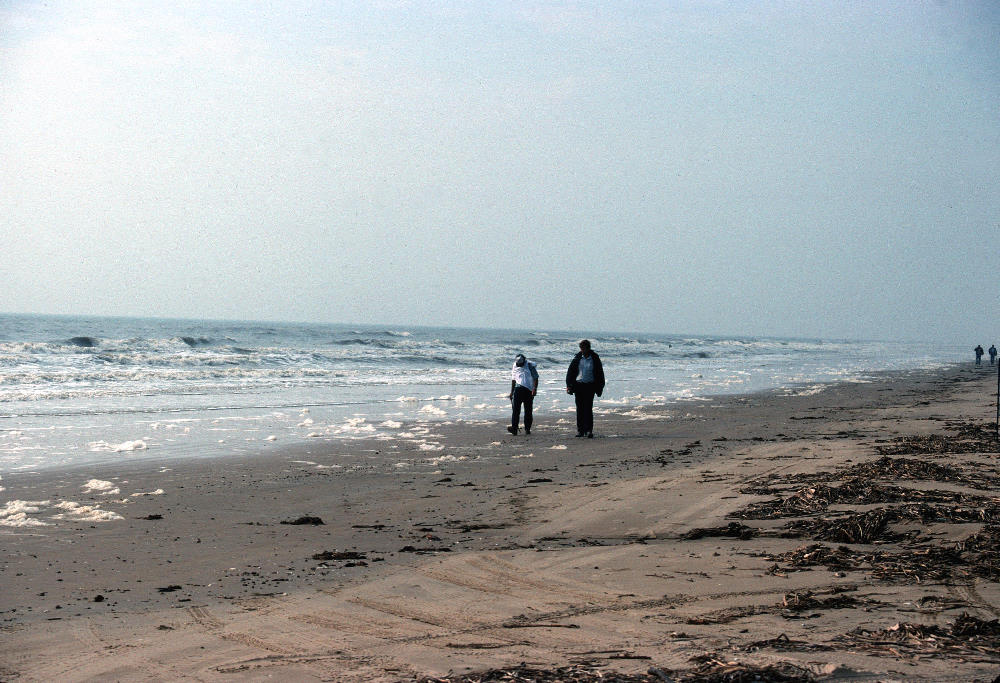
|
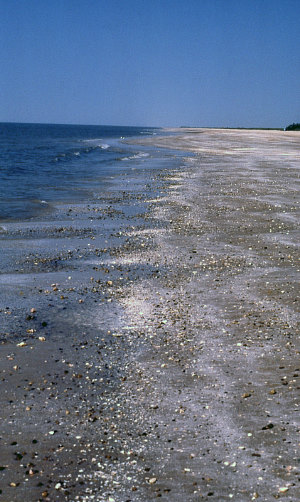
Wave-deposited debris along McFaddin Beach in Jefferson County on the upper Texas coast. TARL Archives.
|
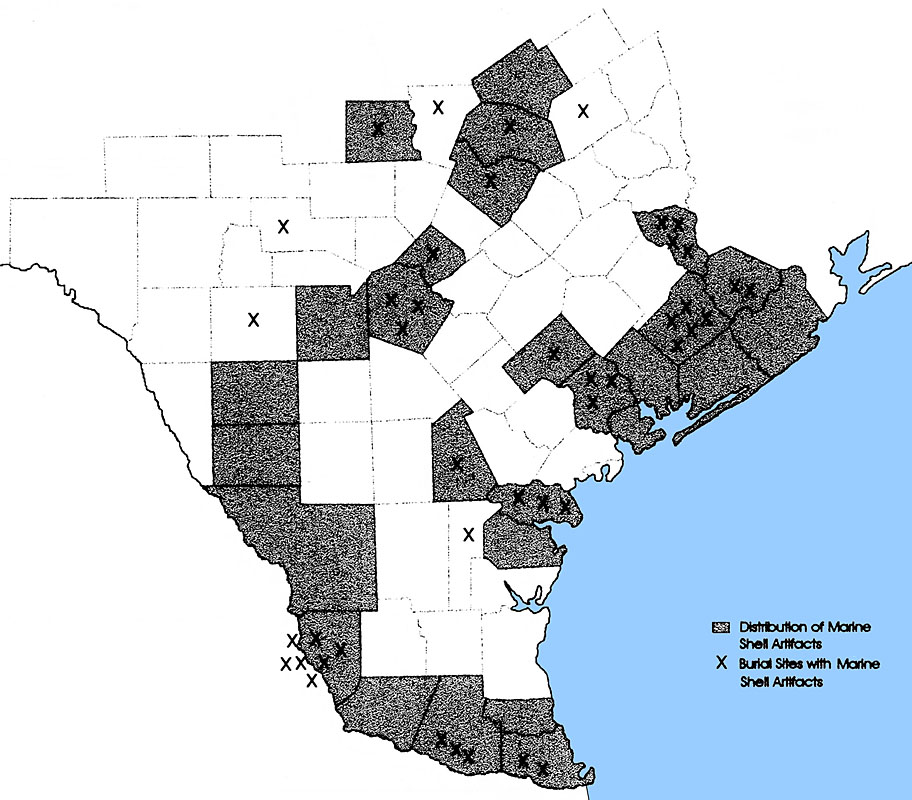
|
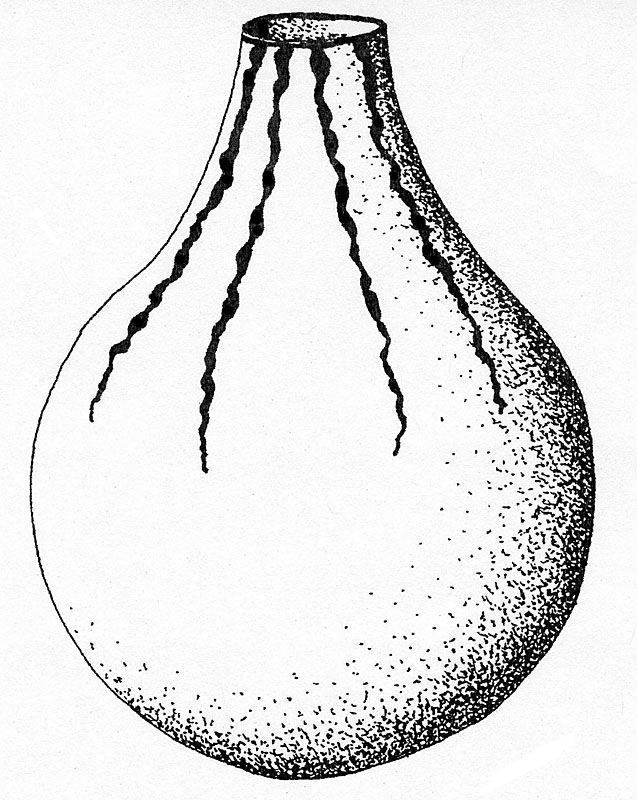
|
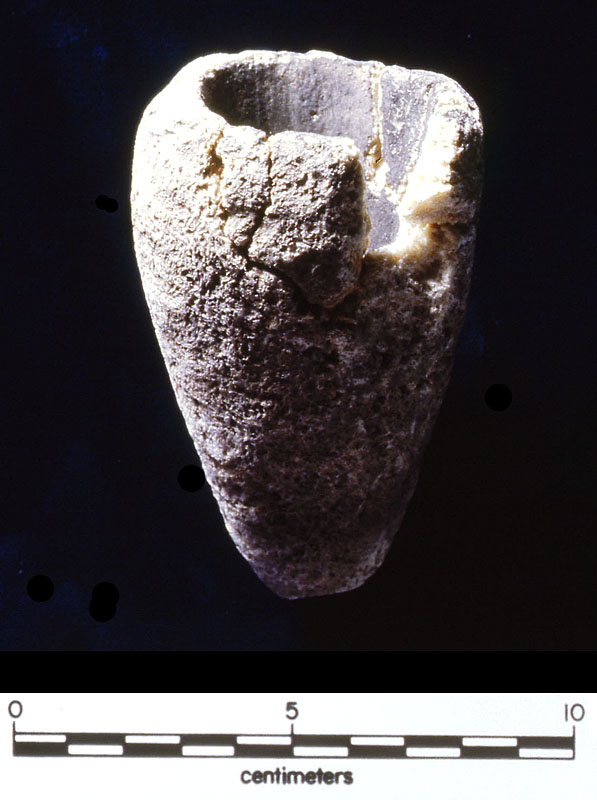
|

